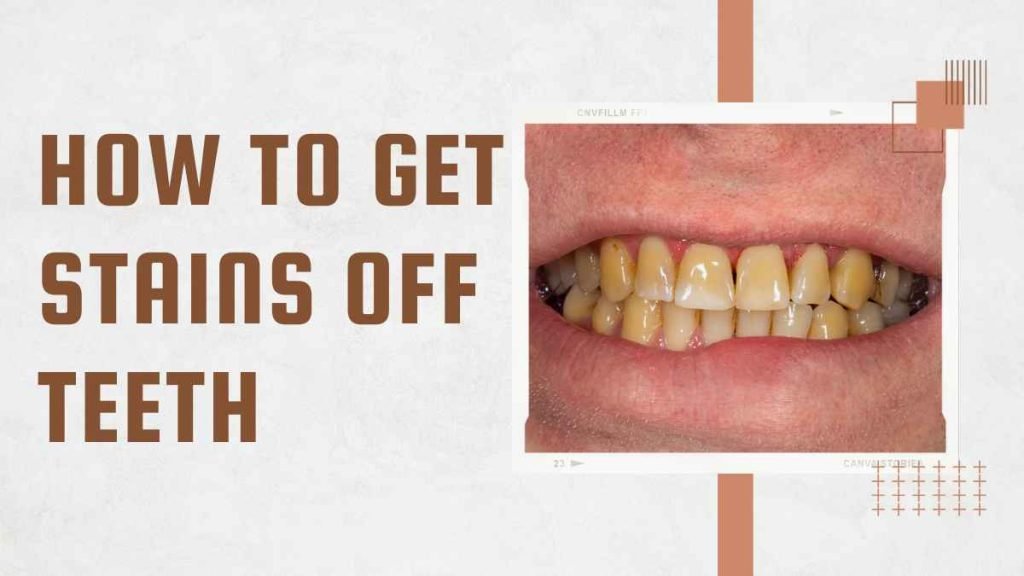Your smile is a radiant expression of your inner self. But unwelcome stains on your teeth can dim its brilliance. Whether caused by coffee, tea, red wine, or other staining agents, these imperfections can undermine your confidence. Fear not! In this comprehensive guide, we’ll delve into the world of teeth stains, exploring their causes, types, and most importantly, effective stain removal techniques. Join us on this journey to reclaim your dazzling smile.

Image: vigorousism.com
Understanding the Origins of Teeth Stains
Teeth stains are primarily caused by pigmented compounds called chromogens, which attach to the porous outer layer of your teeth, the enamel. These compounds penetrate the enamel’s microscopic gaps, creating unsightly discolorations. While surface stains are confined to the enamel’s surface, intrinsic stains penetrate deeper, requiring professional intervention.
Deciphering the Spectrum of Teeth Stains
Teeth stains exhibit a diverse range, each with its unique characteristics:
-
Extrinsic stains: Stemming from external sources, these stains reside on the enamel’s surface. Common culprits include tea, coffee, red wine, tobacco, and acidic foods.
-
Intrinsic stains: Originating within the tooth structure, these stains penetrate the enamel, often resulting from developmental anomalies, excessive fluoride exposure, or trauma.
-
Age-related stains: As we gracefully age, our teeth naturally yellow due to the thinning of the enamel and the accumulation of dentin, the darker tissue beneath the enamel.
Unmasking the Arsenal of Stain Removal Techniques
Combating teeth stains requires a customized approach, tailored to the stain’s type and severity. Here’s a comprehensive arsenal of stain removal options:
1. Over-the-Counter Teeth Whitening Products
-
Whitening toothpastes: Formulated with abrasives or bleaching agents, these toothpastes gently remove surface stains with regular use.
-
Whitening strips: Pre-loaded with a bleaching agent, these strips are applied directly to the teeth, providing a convenient at-home whitening solution.
2. Professional Teeth Whitening
-
In-office bleaching: Performed by a dentist, this treatment involves applying a high-concentration bleaching gel to the teeth, followed by activation with a light source.
-
Take-home whitening kits: Under the guidance of a dentist, patients can use custom-fitted trays to apply a milder bleaching gel at home.
3. Other Stain Removal Methods
-
Dental scaling and polishing: This professional cleaning procedure removes plaque, tartar, and surface stains using specialized instruments.
-
Microabrasion: A minimally invasive technique that utilizes a mild acid solution to gently remove surface stains from the enamel.
-
Veneers and crowns: These cosmetic dental restorations can conceal severely stained or discolored teeth, providing a lasting solution.

Image: www.27fchileanway.cl
Harnessing Nature’s Stain-Fighting Allies
Beyond conventional methods, nature offers an array of stain-fighting remedies:
-
Baking soda and hydrogen peroxide: Form a paste and apply to the teeth for a few minutes to lighten stains.
-
Strawberries: Rich in malic acid, strawberries may help remove surface stains.
-
Activated charcoal: Mix with water or toothpaste to form a paste and brush the teeth gently for a whitening effect.
Expert Insights: Illuminating the Path to a Stain-Free Smile
Renowned dentists share their expert insights on maintaining a stain-free smile:
-
“Regular brushing and flossing are paramount in preventing stains from accumulating,” advises Dr. Emily Carter.
-
“Avoid smoking and excessive consumption of staining foods and beverages,” adds Dr. Michael Jones.
-
“Consult a dentist regularly for professional cleanings and stain removal treatments,” emphasizes Dr. Jessica Williams.
-
“Consider using straws when consuming beverages that may stain your teeth,” suggests Dr. Sarah Lewis.
How To Get Stains Off Teeth
Unlocking the Power of Stain Prevention
Proactive measures can significantly reduce the risk of teeth stains:
-
Limit staining foods and beverages: Reduce consumption of coffee, tea, red wine, and other staining agents.
-
Maintain good oral hygiene: Brush twice a day with a whitening toothpaste, floss regularly,